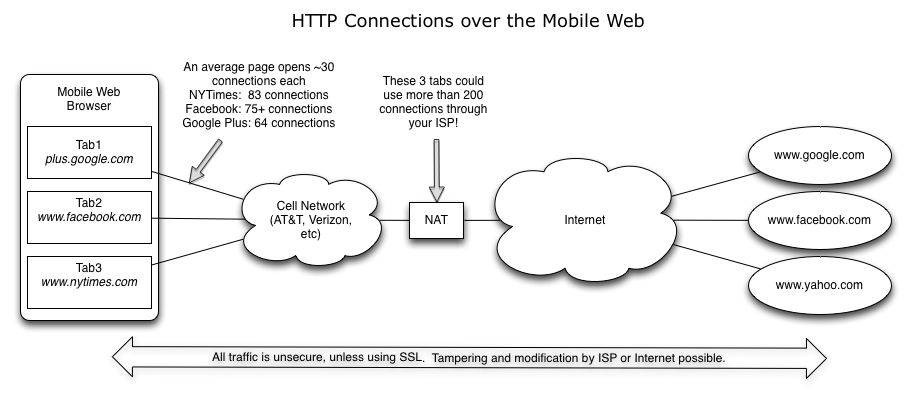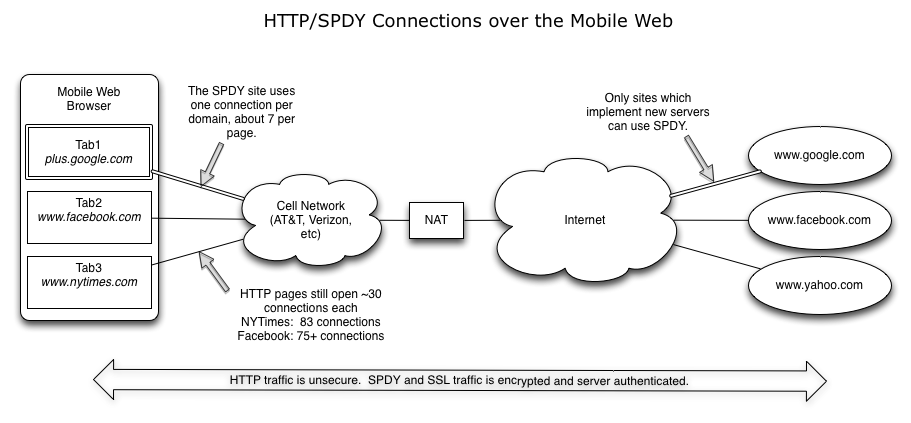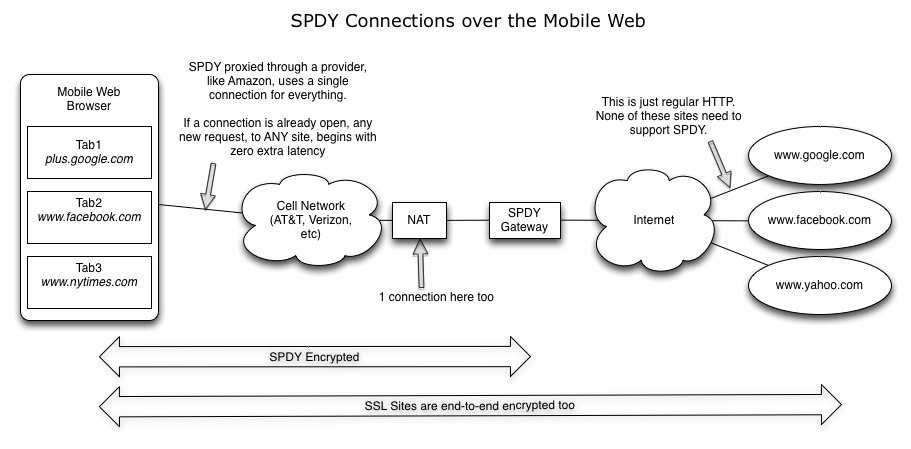In the last couple of weeks many people have asked me to comment on guypo’s benchmark blog post, “Not as SPDY as You Thought”. Guy shared the post with me before he posted it. Overall, I disagree with his title, but I don’t disagree with his results much, so I haven’t felt pressed to comment. He tested something that nobody else has tested, and after reviewing his methodology, it’s mostly fine. Some suggestions have been made for improvement, which he was very open to, and we’ll likely see additional test results coming soon. But his results are not contrary to Google’s or my own results; they’re just a different test.
The reason his results aren’t contradictory is because Guy’s test doesn’t test SPDY page loads. Guy tested partial SPDY page loads, not full SPDY page loads. More specifically, he tested this case: if you upgrade your primary domain, but few of your other domains, your CDN, etc, how does SPDY perform? This is a perfectly valid case to test – especially when sites may take an incremental approach to upgrading. And I’m not surprised at all that if you only upgrade half your page to SPDY, that the results are not as good as if you upgrade all of your page to SPDY.
In the report, Guy breaks out domains into “1st party domains” and “3rd party domains”. He argues that since you don’t have control over the 3rd party content servers, it may not get SPDY-ized, and therefore his test is valid. Ok – thats a good point. But how do we define “3rd party”? I consider “1st party” to be any content which you, as the site owner have control to change directly. So if you load your main content from www.google.com and your images from images.google.com, those are both 1st party domains. Unfortunately, Guy’s classifier did not classify them this way.
To understand what I mean, lets take a look at the domains used on a few sample pages and how his test loaded resources from them. I simply picked three from his test results. Every page tested is different, but the patterns below are common to many of the top websites.
|
www.cnn.com |
www.ebay.com |
www.yahoo.com |
|
|
Domains Used |
icompass.insighexpressai.com z.cdn.turner.com i.cdn.turner.com ad.insightexpressai.com s-static.ak.fbcdn.com svcs.cnn.com gdyn.cnn.com s-external.ak.fbcdn.com |
ir.ebaystatic.com i.ebayimg.com q.ebaystatic.com p.ebaystatic.com thumbs4.ebaystatic.com rover.ebay.com srx.main.ebayrtm.com rtm.ebaystatic.com ad.doubleclick.net pics.ebaystatic.com s0.2mdn.net |
l.yimg.com us.bc.yahoo.com v4test.yahoo.com v4test2.yahoo.com v4test3.yahoo.com dstest.yahoo.com dstest2.yahoo.com dstest3yahoo.com ad.doubleclick.net |
|
SPDY domains |
1 |
1 |
1 |
|
Non SPDY domains |
9 |
11 |
9 |
|
Resources fetched over SPDY |
40 |
20 |
48 |
|
Resources fetched over HTTP |
46 |
37 |
26 |
|
“1st party” resources that could have been SPDY but were NOT in Guy’s test |
31 |
34 |
24 |
I hope you can now see why I don’t discredit Guy’s test results. On these pages, 25-50% of the 1st party controlled resources which could have been loaded over SPDY weren’t loaded over SPDY at all. If you only partially use SPDY, you only get partial results. This is okay to me.
Nobody should think I’m discrediting Guy’s work here. He’s done a great job with great vigor, and it takes an incredible amount of time to do these tests. He’s planning to do more tests, and I’m very thankful that he is doing this and that Akamai is letting him do so.
In the next wave of tests, I expect we’ll see that SPDY benefits are increased. Keep in mind that your average site isn’t going to see the 2x speed boost. The overall benefit of SPDY is conditional on many factors, and websites today have not yet been tuned for SPDY. Most sites will see benefits in the 5-20% range (like Google did). A few will see 50% better. A few will see worse. Everyone will benefit from new optimization possibilities, less complex websites, and a more network and mobile friendly protocol. More testing like Guy’s is the key to a better HTTP/2.0.


